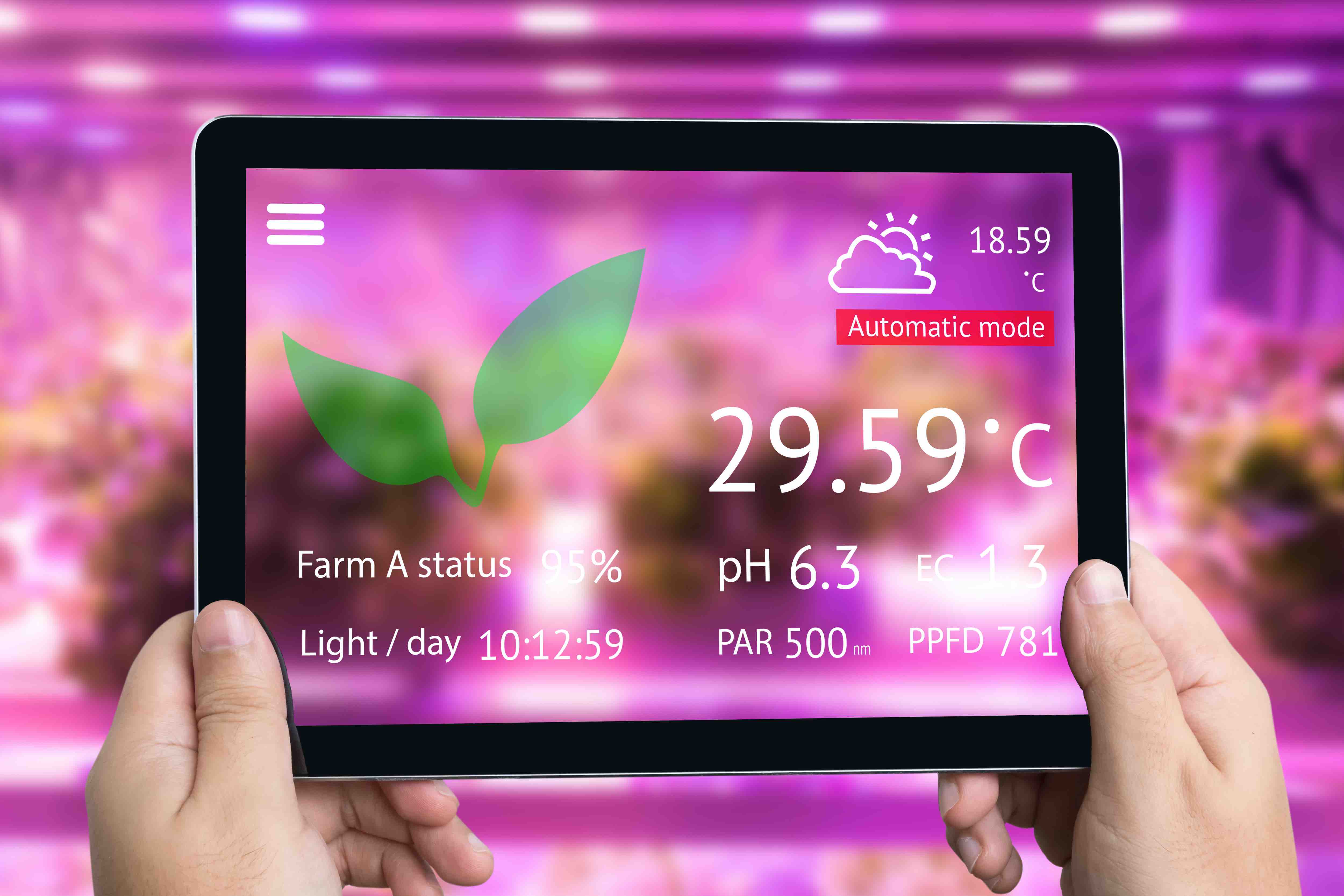
Features
Cultivation
Production
Vanity metrics and measures to use instead
November 25, 2019 By Vanessa Nielsen

We’re at a point where analytics technologies have greatly evolved and can help growers increase yields. However, the cannabis industry is young and cultivation standards are still developing.
In this space, we’re obsessed with metrics. We frequently hear that metrics are necessary to ensure our grow is successful and continuously improving. Metrics are convenient. They attempt to simplify complex processes and decisions down to a single number. Metrics are also psychologically rewarding because they make it easy to track changes and compare ourselves to others.
However, it’s easy to get hung up on vanity metrics. Vanity metrics are numbers and statistics that when provided out of context mean very little. What’s worse is that they can be misleading because they do not necessarily lead to outcomes we care about, like increased yields, greater consistency, and ultimately, higher revenue. The solution is to build good (or at least, better) metrics, but it’s not easy.
Good metrics are measurable, consistent, actionable, and lead to better ROI or more revenue (both would be nice). In this article, I will uncover some popular cultivation vanity metrics. I’ll share some alternatives to these metrics and explain what makes them better.
Lighting
Vanity Metric: Lumens, lux, CCT, CRI
Replace With: PPFD
Lighting is crucial for the grow environment and should be quantified and tracked. Unsurprisingly, a meta-analysis published in Frontiers in Plant Science found that light intensity, quality, and duration are among the best predictors of cannabis yield. Light intensity and quality are described by several parameters depending on the lighting application. But several of these parameters can also misrepresent horticultural lighting quality.
Lights in residential, commercial, or industrial buildings are for enhancing the vision and performance of humans. For this reason, it’s common in these industries to use human-centric measures that describe light intensity and colour as seen by human eyes.
However, plants “see” light differently than we do. Wavelengths that appear bright to our eyes such as green, yellow, and orange are not well absorbed by plants. In contrast, there are some wavelengths like blue and UV that appear dark or invisible to our eyes that plants are capable of absorbing. As a result, lux, lumens, correlated colour temperature (CCT) and colour rendering index (CRI) are inappropriate for horticultural lighting applications.
Photosynthetic photon flux density (PPFD) is more useful. PPFD describes the amount of photosynthetically useful light arriving at a plant. Ideally, PPFD is measured at the height of the plant canopy directly below the light source. Research shows that the ideal light intensity for cannabis photosynthesis is 1500 mmol m-2 s-1.
Tracking long-term trends in PPFD is useful for several reasons. If growing in greenhouses or hybrid greenhouses, a grower can track changes in light intensity over the day or year. During periods of seasonally limited sunlight, supplemental light can compensate, whether done manually (using timers) or automatically (sensor-based controls). If growing in an indoor facility, reductions in PPFD can help growers identify the correct times to replace bulbs. Lights will keep plants productive only as long as the light intensity remains strong. Below 500 mmol m-2 s-1 cannabis photosynthesis rate drastically falls.
Sometimes it is also useful to report the amount of light a plant receives over the course of a day, known as the daily light integral (DLI). DLI is a measure of the total PPFD delivered over the course of one day and has become widely adopted by horticulturists.
Research from the American Society for Horticultural Science shows that for many crops, there is a strong relationship between DLI and plant yield. Generally, as DLI increases, yield increases linearly. A white paper produced by Smart Grow Systems estimates that a DLI of 65 mol m-2 d-1 is ideal for cannabis, however at the time of writing this article there is no scientific research to confirm this.
Climate
Vanity Metric: Vapor Pressure Deficit
Replace With: Batch Trends and Microclimate Metrics
Temperature and humidity impact plant health and productivity. A common metric for interpreting temperature and humidity and understanding the amount of water vapour in the air is through Vapor Pressure Deficit (VPD). VPD seems to simplify complex plant processes and overall plant health down to a single black and white answer: “optimal” or “non-optimal”. However, VPD is not the silver bullet that some growers treat it to be.
VPD is a strong indicator of plant transpiration rate, but only within a certain range. Transpiration is the process of water evaporating from plant leaves during photosynthesis or when the plant is too hot and needs to cool down. Research at Columbia University showed that as VPD increases, transpiration also increases. Based on this information a grower may worry that if placed in “non-optimal” VPD conditions a plant will transpire too much.
However, this is simply not the case! During conditions of very high VPD, research shows that plants respond accordingly and reduce their transpiration rate to conserve water. This observation holds true for a large range of plant species.
Another reason that VPD is a poor metric for growers is that it is not a strong indicator of yield. Instead, environmental factors like temperature, humidity, plant density, soil moisture, and fertilizer regime are stronger predictors. Instead of VPD, consider comparing environmental trends on a per-batch basis and generating microclimate metrics. Batch-based trends ensure batch-to-batch consistency while microclimate metrics ensure within-room consistency.
With data from five to ten batches a correlation analysis can be performed to determine the relationship between an environmental factor (say, temperature) and yield. From this analysis, a correlation coefficient will be generated. A coefficient of 1.00 or -1.00 indicates a strong positive or negative relationship, respectively. Coefficients closer to 0.00 indicate weaker relationships. To reveal nuanced relationships advanced analysis techniques like regression and machine learning can be used.
While it’s important to dial-in on optimal environmental conditions, many growers still struggle with maintaining consistent conditions across a room. As a result, pockets of the grow room may have variable conditions, known as microclimates. To get a sense for variability across a grow room a microclimate metric can be calculated. Take measurements in a grid-like pattern across the greenhouse. Calculate the standard deviation of the measurements to get a sense for how variable the conditions are. The smallest possible value for standard deviation is 0, and this only happens if conditions are absolutely uniform. Higher values indicate greater environmental variability within the room.
Genetics
Vanity Metric: Strain Name
Replace With: Pairwise Relatedness (r)
A plant’s phenotype and chemotype (chemical phenotype) is the result of both genetic factors, environmental factors, and the interactions between them. Unfortunately, accurately verifying genetic strains is challenging in the cannabis industry.
To begin, the term “strain” is often used interchangeably with “variety” or “cultivar”. It has no defined botanical meaning and is generally not favoured by horticulturists. For this reason, it can be unclear whether a new genetic line can be designated as a strain. This ambiguity is underscored by reports that suggest that within-strain genetic consistency is low.
Research shows that plants of the same strain purchased from a single breeder can vary genetically by 37 per cent. Even the common description of Sativa and Indica types is under debate by genetic researchers.
These high rates of within-strain genetic variability may result from the weak verification systems in place for cannabis, the potential for misidentification, and the popularity of creating new names for plants of unknown origin. This can be a challenge for growers who need to produce consistent product. When the genotype of a crop is a source of variability, it becomes even more challenging for growers to determine optimal environmental conditions and accurately anticipate phenotypes and chemotypes.
Ideally, plants with the same strain name, regardless of the origin or supplier, should have identical, or at least, highly similar genotypes. Instead of relying on strain name to ensure genetic consistency, growers should address strain variability at the molecular level.
Research from the University of Northern Colorado uses pairwise relatedness to determine if two strains are closely related. If two samples are very genetically similar, we can expect a pairwise relatedness score of 0.99 – 1.00.
To calculate pairwise relatedness between two samples, the plants must be genotyped at more than 30 different genetic markers and compared to a database of other strains. Free software exists to make these calculations simpler. However, companies who offer genotyping services can likely performing this calculation for you.
The metrics described above are just the tip of the iceberg. Advances in sensor technology, bioinformatics, and data storage, movement, and analytics can provide growers with unprecedented insights into the cultivation process. However, it’s unlikely that a silver bullet metric will be the solution.
When choosing metrics to support your decision making, ensure that they connect to the outcomes you care about (yield, for example). Use peer-reviewed research to confirm that there is a known link between the metric and outcome. With some critical evaluation, metrics can be used to take a data-driven approach to decision making.

Print this page